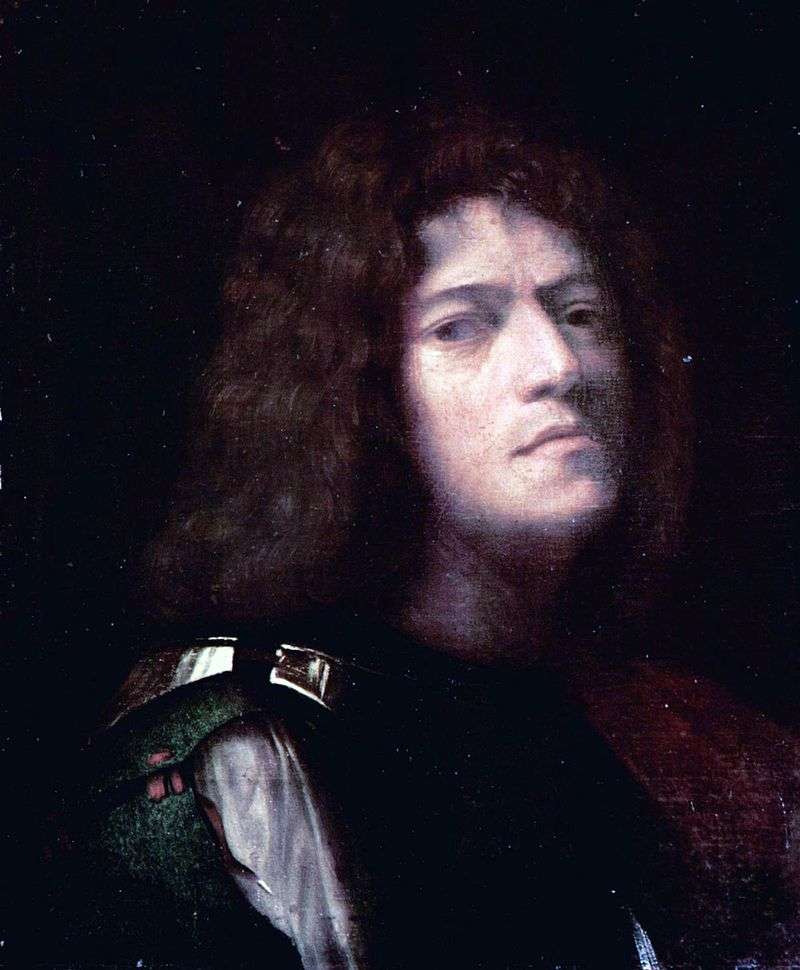
Self-portrait of Giorgione, the painting was painted by the artist in a mature age. The size of the portrait is 52 x 43 cm, canvas, oil. The exact date of the creation of the portrait is unknown. Probably a self-portrait in the guise of David; perhaps the picture of the Venetian artist originally depicted David and Goliath, but later the lower part of it with Goliath’s head was cut off. Giorgione, an Italian artist, the first in time in the galaxy of leading masters of Venetian painting Cinquecento of the 16th century. He was born in a small town in Veneto, so he was also called “Dzorzzo from Castelfranco”.
In general, the biography of Giorgione is full of lacunae and riddles: it is based mainly on legends, indirect data and stylistic parallels, as there are very few original documents about it. But his creativity is mysterious, first of all. Giorgione was a pupil of the painter Giovanni Bellini and learned the depth and brilliance of his warm color, even surpassed him in these qualities. His main activity was Venice. He wrote here the altar images, performed numerous portrait orders and, according to the custom of that time, decorated his paintings with chests, caskets and facades of houses.
With a certain certainty of Giorgione, who lived a very short life, very few, one or two dozen paintings are attributed, and all the most characteristic and famous of them each individually represent an exciting, hitherto uncovered riddle. The fact is that Giorgione is much more determined than all his contemporaries have moved from compositions based on clear symbolic programs to free poetic improvisations, the meaning of which varies whimsically depending on the mood of the viewer.
This dreamy lyricism is associated with him with remarkable pictorial skill: a thin light-and-light haze, so-called. “sfumato” provides spatial unity, combined with extremely accurate, accentuated color accents and smooth compositional rhythm, harmoniously linking figures with symbolic details. In these details, occult meanings were often found – but still the main secrets are of a purely aesthetic significance here, expressing the master’s love not so much for ciphers or allegories as for the general atmosphere of romantic understatement.
As you know, none of the paintings attributed to the artist, there is no signature Giorgione; Some of his unfinished works are known only from copies and engravings. Therefore, the attribution of paintings by the artist is a rather complex problem, which caused controversy among art historians as early as the 16th century. The exhibition “Giorgione and georgejoneski”, held in Venice in 1956, introduced some clarity in attribution. Currently, most researchers of Giorgione’s creativity and art historians of the High Renaissance believe that Giorgione’s brush has about 20 paintings. Among the works attributed to Giorgione, are particularly remarkable: the altarpiece of the cathedral in Castelfranco; paintings “Madonna and Child in the Landscape,” “Madonna Behind the Book,” “Judith,” “Three Philosophers,” “Sleeping Venus”; “
Giorgione’s art enriched the Venetian painting with a new understanding of the problems of composition, color and picturesque texture, and expanded the range of its subjects; It became a model for his most famous student – Titian. Contemporaries Giorgione wrote about him as one of the greatest Italian artists. Giorgione died suddenly, quite young, becoming, most likely, a victim of some epidemic such as the plague. His authority in the centuries remained strong enough. Giorgione was even called “the first truly modern artist,” considering him the early forerunner of Romanticism. In the 19th century, Eduard Manet consolidated his fame by repeating in his famous “Breakfast on the Grass” the main motives of his “Rural Concert”.
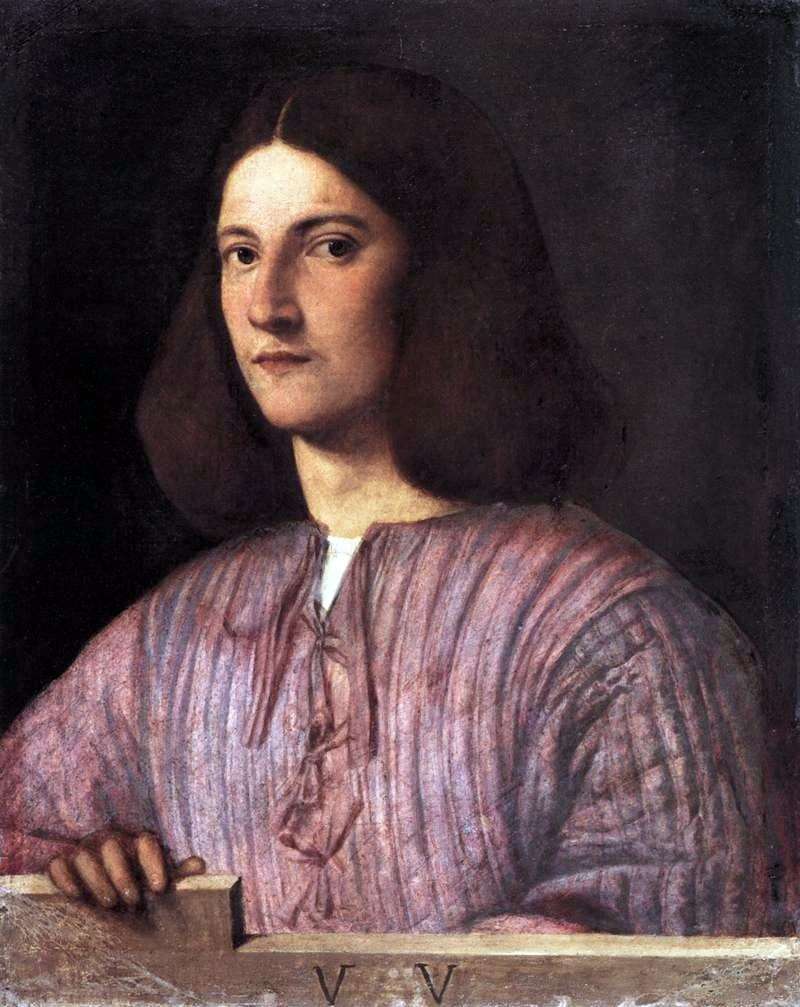 Portrait of a young man by Giorgione
Portrait of a young man by Giorgione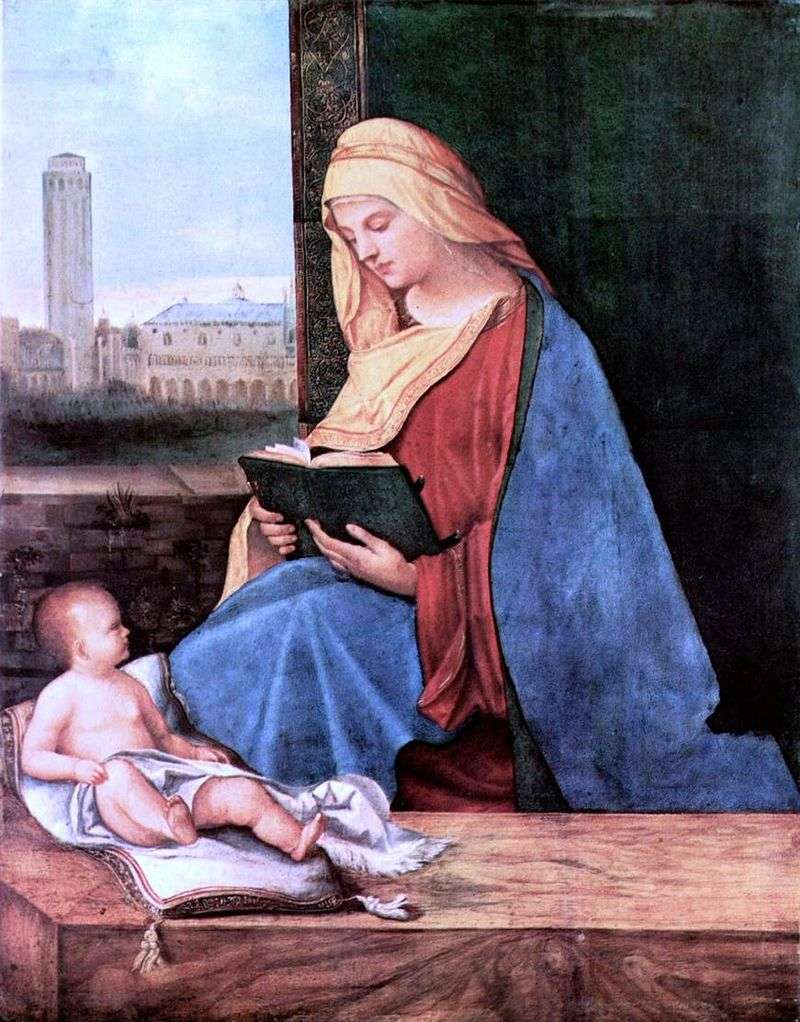 Reading Madonna by Giorgione
Reading Madonna by Giorgione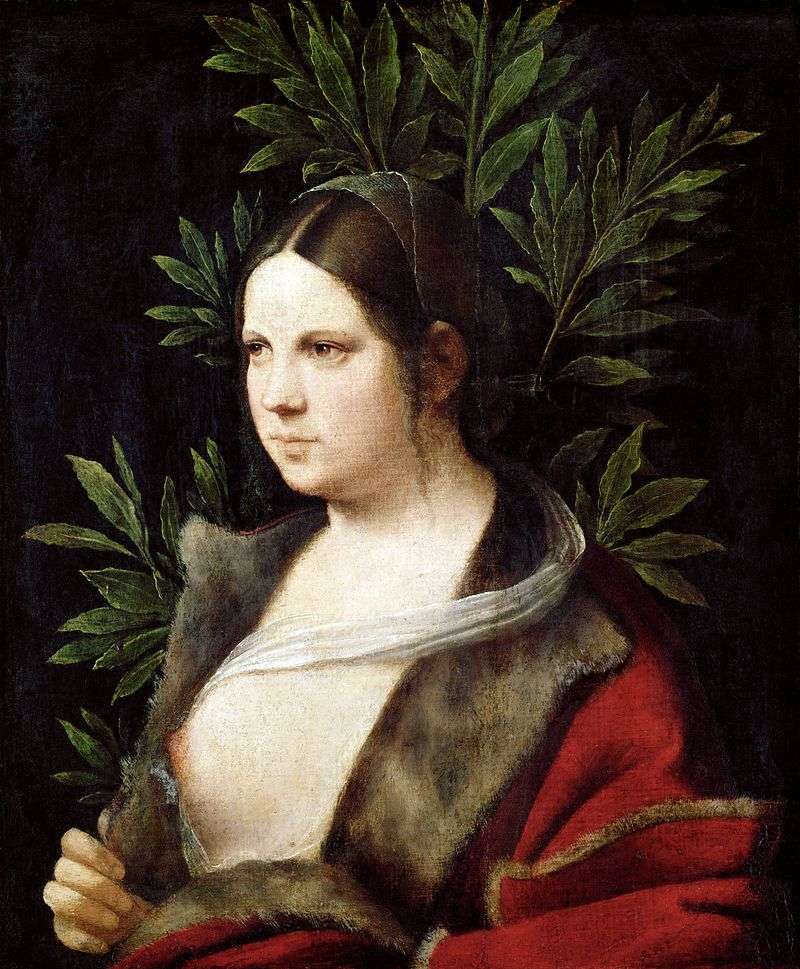 Laura by Giorgione
Laura by Giorgione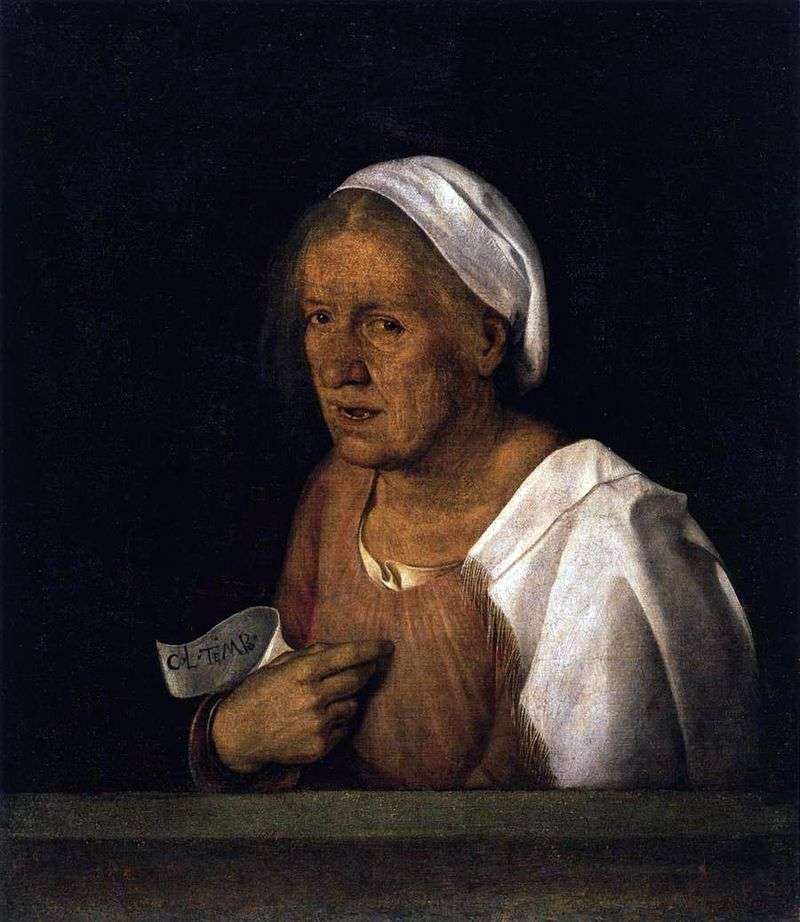 The old woman by Giorgione
The old woman by Giorgione Madonna and Child in the Landscape by Giorgione-Barbarelli-da Castelfranco
Madonna and Child in the Landscape by Giorgione-Barbarelli-da Castelfranco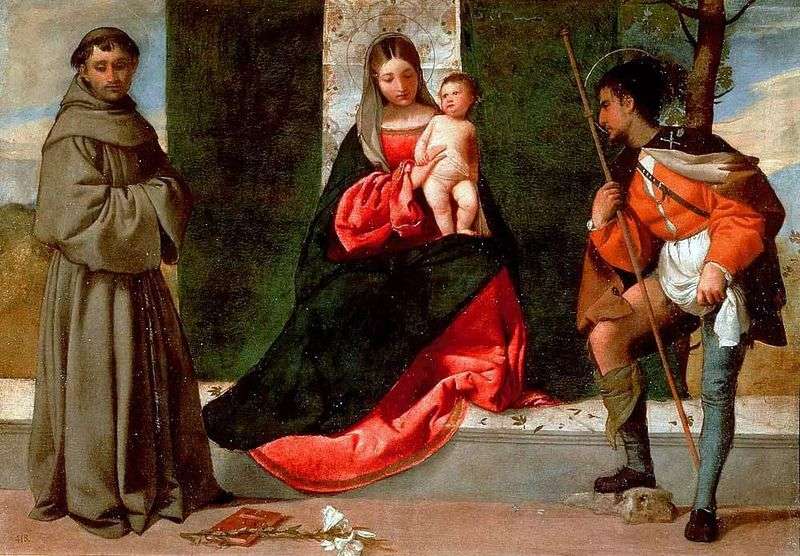 Madonna and Child, Saints Rock and Anthony of Padua by Giorgione
Madonna and Child, Saints Rock and Anthony of Padua by Giorgione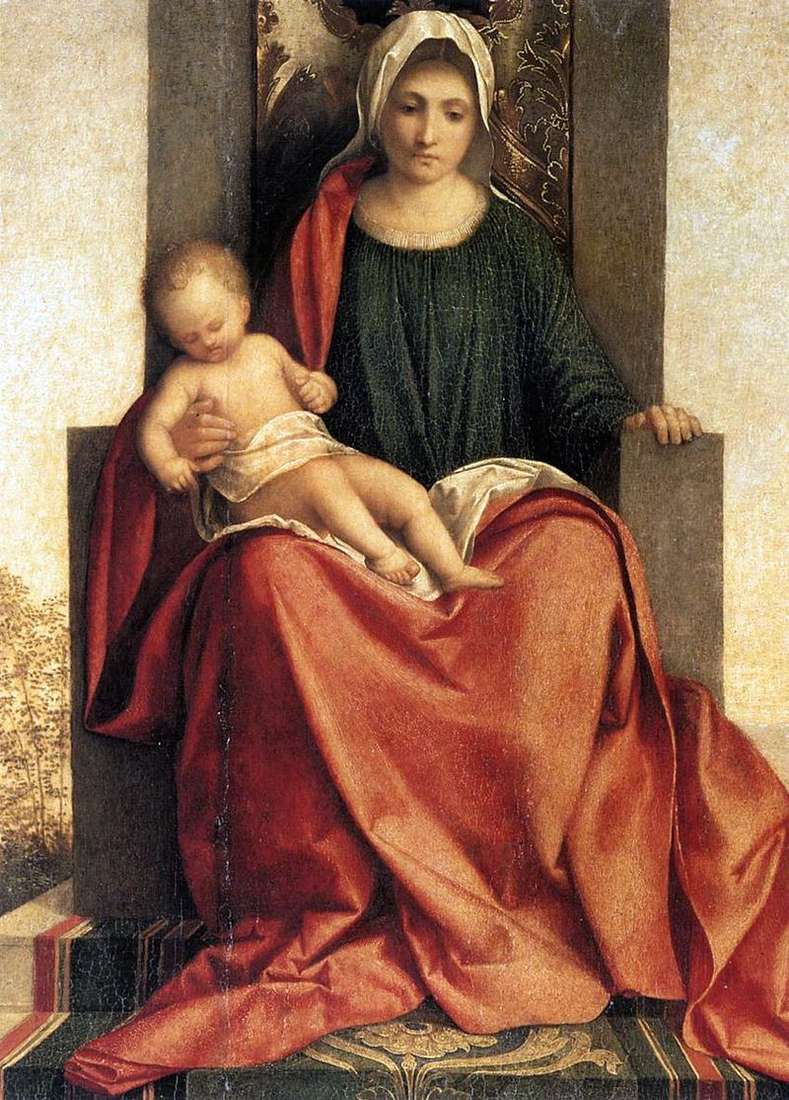 Madonna and Castelfranco by Giorgione
Madonna and Castelfranco by Giorgione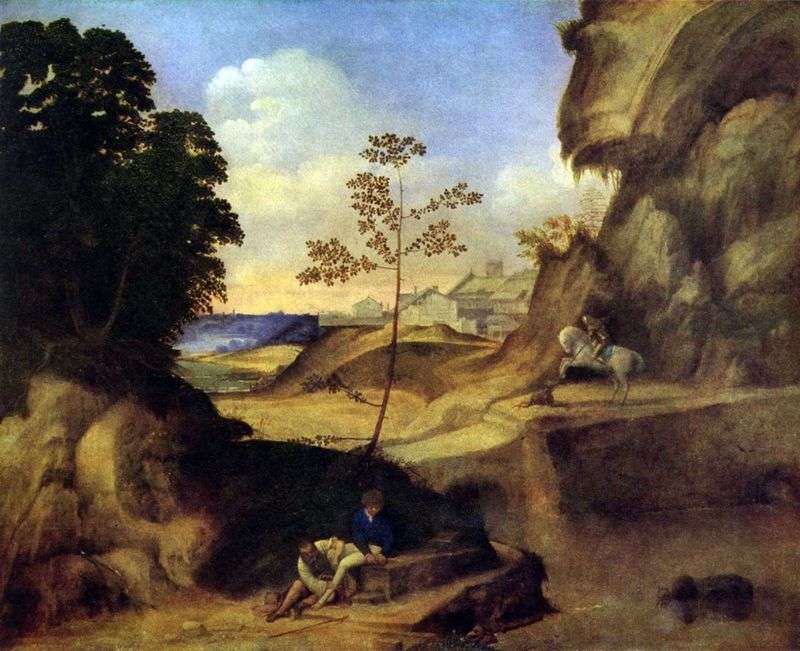 Sunset by Giorgione
Sunset by Giorgione